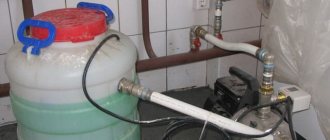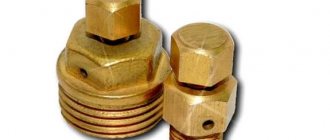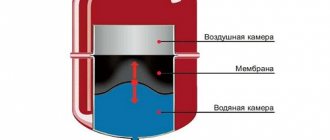Installation of underfloor heating assumes the subsequent long-term and trouble-free operation of the heating system. In a city apartment, private house or in the country, a water-heated floor is equally effective and comfortable. Such a heating system can be equipped in almost any living space, but the effectiveness of its use depends on the compliance of the technical characteristics of the equipment with the design features of the room. Correctly calculated and laid heating circuits, qualified pressure testing of the underfloor heating system will allow homeowners to forget about the hassle of servicing heating devices for a long time.
The procedure for pressure testing the heating circuit of warm water floors
However, the idyll cannot continue indefinitely - any technique is not eternal and needs to be repaired over time. Underfloor heating is a complex complex of a wide variety of equipment, a malfunction of one of the elements of which can lead to the failure of the entire heating system.
In some cases, for example, in case of problems with the throughput or tightness of the floor water heating pipe, during the preservation of the house, it is necessary to drain the water from the heating circuit.
Let us consider in more detail in which cases it is necessary to drain the liquid from the underfloor heating system, and how this is done.
There can be quite a few reasons why it becomes necessary to drain the water from the heating system pipelines yourself - from the upcoming long absence of residents in the house to replacing the water in the system with antifreeze. In order to do everything right, and not damage the heating system, we will figure out in more detail how to drain water from a warm floor on our own.
A common reason for the need to drain the coolant is the preservation of the heating system for the winter when used in the ordinary water circuit. Before the onset of cold weather, this event is mainly carried out in dachas and in country houses that are not used in winter. To simplify and accelerate the draining process, special equipment is used.
Portable air compressors (motor driven)
Important!
In housing for seasonal use, failure to drain water from the heating circuit of underfloor heating before frost arrives is fraught with defrosting of the system, therefore the use of antifreeze as a coolant is indisputably preferable - in addition to resistance to low temperatures, these fluids are less subject to wear and tear on pump parts.
Another equally important measure in the operation of underfloor heating is preventive work on the heating system. Boiler water contains a lot of impurities, which, when heated, precipitate or form layers on the walls of the pipeline. Due to a decrease in the internal clearance of heat pipes, the circulation of the coolant in the system is disrupted, and heat transfer is reduced. For this reason, when using water, the coolant must be drained once or twice a year.
An antifreeze-filled water circuit does not suffer from this problem. The replacement of the coolant in this case is carried out every 3-5 years - provided that the boiler is operated without overheating (for underfloor heating, the maximum permissible threshold for the heating medium heating temperature is 45-55 0 С).
One of the types of antifreeze for filling the contours of the underfloor heating system
Another reason for the need to drain the coolant can be the loss of its physical properties by the liquid.A change in the characteristics of antifreeze occurs after overheating - the solution begins to foam, filling individual sections of the heat pipes with foam, which disrupts the circulation of the coolant in the system and reduces heat transfer.
Failure to comply with the technology of installing a warm floor, the use of materials that are not intended for contact with chemicals, causes the occurrence of corrosive processes in the heating system, as a result of which the circulation of the coolant is also disrupted, and leaks of the water circuit occur.
Naturally, you will have to drain the water from the underfloor heating pipeline when replacing it with antifreeze - modernization.
These are the main reasons for the need to empty the underfloor heating system and, regardless of the base, the water must be drained in accordance with all the rules, with the implementation of safety measures and the observance of the technological sequence of the constituent operations.
The procedure for draining water from the system
Warm floors are a closed system, so you need to take care of the drain taps at the installation stage. The number of valves must correspond to the number of water circuits.
Underfloor heating is actually a long hose laid in the floor. Laying method - the configuration of the contours can be different, but the principle of operation of the water circuit is the same - the coolant gives off heat to the surrounding space by heating the floor surface.
Image of the contour of the underfloor heating system made of a copper pipe, laid on a reinforcing mesh in front of the screed device
Before starting the operation to drain the coolant, the heating system is turned off, after which the time required for the complete cooling of all its elements is waited.
Considering the fact that the water circuit is connected to the main pipeline, and the connection point is located above the floor level, the water is drained forcibly using an air compressor.
Note: the power of a household vacuum cleaner is not enough to empty the underfloor heating system.
Important!
To purge the water circuit, a compressor with an operating pressure of up to 5 bar is used - the use of a more powerful unit is fraught with the destruction of heat pipelines.
Pressure gauge needle at 6 bar - the maximum permissible purge pressure of the underfloor heating system is exceeded!
Draining is carried out through a return line equipped with a drain valve, and the compressor is connected to a manifold on the inlet pipe, so the non-return valve may interfere with the blowing of the pipe. After connecting to the manifold, the compressor turns on to displace the coolant from the circuit, and a smooth increase in the air supply pressure is performed - up to the value after which the liquid began to flow out at the outlet. It should be remembered that the volume of water in each of the underfloor heating circuits is insignificant, therefore an ordinary bucket with a volume of 8-10 liters is sufficient to receive it.
The compressor must run until air flows continuously from the pipe following the water.
On a note:
if you do not have a compressor on hand, there is another way to free the system of water and avoid defrosting the heating system. A hose of a suitable diameter 1 m long with a funnel at the end is tightly put on the inlet of the heat pipe. Raise the end with a funnel higher and gradually pour into it a liquid for washing car windows - "anti-freeze" (it is better to use a brightly colored one). As it is displaced, water will flow from the return pipe, and then the technical liquid - a long but effective process.
Some heating problems that do not require draining the water
Most often, heating problems are associated with the fact that water does not circulate in the heating system, for various reasons.
There are many reasons, and the most common are the following:
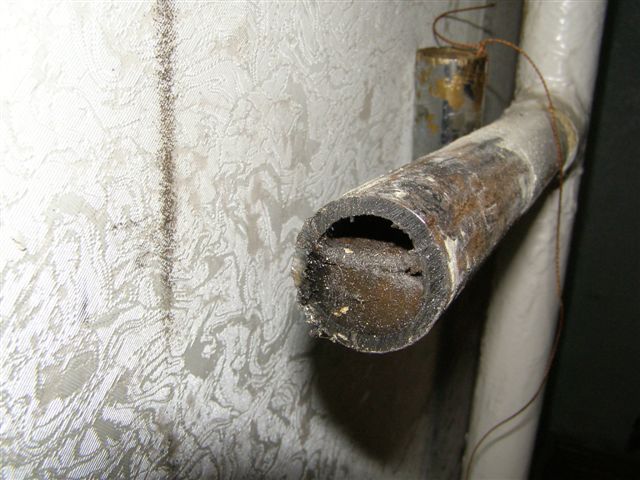
Many irregularities in heating systems are interconnected, for example, water gurgles in the heating pipes.This phenomenon can cause discomfort and complaints - the radiators in the house make noise. Each person perceives the sounds that the heating system can make differently. Someone thinks that the heating is gurgling, another perceives these sounds as a hum. Unpleasant sounds include knocking in radiators during system operation.
Noises in heating circuits are phenomena of the same order and there are many reasons for them:
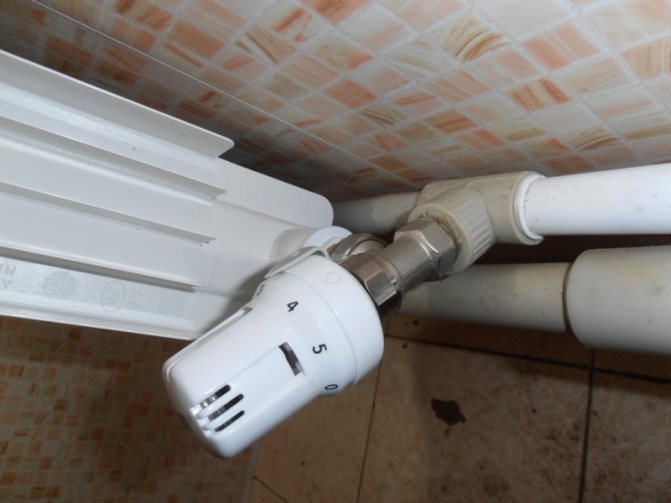

The reasons listed are the most common. In any case, if various unpleasant noises appear in the heating system, which were not there before, you need to carefully inspect and analyze the operation of the circuit.
After establishing the localization of the malfunction, it must be eliminated.
But if it does not work out on your own to find and eliminate the malfunction, then you need to contact the specialists.
To category: Water supply and heating
Technical subtleties and nuances
In preparation for draining, it is necessary to study the collector device in order to find and mark on the supply and return the location of the valves, marked as follows:
- pitchers - red;
- reverse flow is blue.
Compressor connection diagram for draining the underfloor heating system
Having confused the flow with the return, the drain system will not work - the check valve will block the pipeline.
If there is no receiving container, then you can connect the drain hose to the return valve and stretch it to the nearest sewer intake - toilet bowl, sink or ladder.
Manifold unit for underfloor heating system
Having finished the drainage of water from one circuit, all the others are emptied in the same way. During the draining of a section of the system, the valves of the remaining circuits must be closed, and at the end of each stage, the valves of the drained pipelines must also be closed.
For a full-fledged emptying of the circuits, the purging procedure can be repeated after an hour - when moisture from the walls of the heat pipes drains and accumulates in some area.
We drain water from the central and autonomous water supply system
In modern summer cottages, many install a pipeline system. The pipeline is possibly connected:
- to the central water supply,
- to an autonomous water supply system.
If for the winter period it is required to drain the water from the central pipeline, you must perform the following steps:
- Shutting off the water supply to the room. To do this, go to close the tap located on the inlet pipe.
- Opening all pipeline taps to drain the water.
In order to drain water from pipes in the country for the winter from an autonomous pipeline system, you need to do the following:
- If water is supplied from a well, the pump must be removed from it.
- It should be mothballed for the cold season in accordance with the instruction manual.
- If a container with a storage system is used, open the drain valve on it.
- In addition, in places of water consumption, open the taps to empty the pipeline system.
- To completely remove water from the pipeline, you must additionally purge it with a compressor.
- If the storage tank is not used, you need all the taps on the pipeline system and drain the water.
How to properly drain the water from the system?
If a summer water supply system was organized on the site and water rose from a shallow well or well, then in addition to draining the water from the internal wiring system in the house, it is necessary to pull out the pump so that the water in the water supply pipe does not freeze. In such simple systems, there are usually no specialized methods for convenient draining. If water is supplied to the house from a well with a caisson, then the pump does not need to be lifted from the well - it is enough to open the drain valve above the head and water from the water supply system will return to the well.The drain cock is located between the check valve and the accumulator. In the process of draining water, all taps at the draw-off points must be open. If the house has a storage tank, drain the water from it. Do not forget about the summer water supply located on the street - it will suffer from frost before anyone else.
To effectively drain, water pipes must have a certain slope so that all water is guaranteed to leave the system and does not linger somewhere inside. A small amount of water remaining in the pipe and turning into ice can break the pipe and break the tight connection. Even a solid steel pipe will not be able to withstand the pressure of the ice that forms. Water from the water heater is also discharged through the drain valve connected to the tee. The tap and tee must have a hose nozzle before the check valve on the incoming water pipe. Another tee with a tap to supply air when draining the water should be installed on the outlet pipe from the heater.
If, for some reason, the drain taps were not installed during the installation of the water supply system, and frosts are about to hit, then you can remove water from the pipes using a compressor. Getting into the pipes through the tee, compressed air is able to displace all the water out. The compressor can be used even with a drain cock if you want to purge the system and make sure that not a drop of water remains in it. Air purging is especially important if the internal piping in the house is made of hard plastic pipes, which, for the sake of design, are mounted strictly horizontally. In this case, a complete drain from the system is obviously not guaranteed and the use of a purge is mandatory.
If you live in a country house permanently, and the heating system does not use antifreeze, but ordinary water, then before a long departure in winter it will also have to be drained so that the heating pipes and radiators do not fail. Of course, for such cases, various in complexity and price options have been developed for standby heating of the water supply system, heating, or the room as a whole to a temperature of several degrees above 0 C. But all these methods do not guarantee complete protection, because the control of a boiler or other heat source mainly occurs using electronics, and in your absence, the electricity can be turned off. In addition, electric heating equipment that is constantly on in the absence of the owners increases the risk of fire. Therefore, the best, cheapest and most reliable protection of the heating system against freezing is the use of antifreeze.
But if it happened that instead of antifreeze, water is used as a coolant, then how to properly drain this water from the heating system? Shut off the boiler or close the distribution valve on the pipe from the riser. Close the valve through which water is supplied to the heating system. To drain water from the radiator system, use a hose of the required length to drain the water to the place of discharge into the sewer or outside. Open the drain valve on the radiator, and in the heating system, open the tap with an air valve - this will speed up the drainage of the water.
Where else can the water stay? Remember to drain all siphons (water traps). There are water locks in every home, they are located in the curved sections of the drain pipe under sinks, under bathrooms, in toilets. Also, water remains in the coarse filter, in the main filter unit, in the washing machine, dishwasher and in the electric water heater. It's easier to say, before you close the cottage for the winter season, check all the devices to which water was supplied in summer.
All work on draining water and preserving the individual water supply system must be carried out at a temperature not lower than + 5 C.
Water drain technology, cleaning heating pipes
Drain valve in the heating system
Before filling the heating system of a double-circuit boiler, it is necessary to drain the old coolant. This procedure is mandatory and, despite its apparent simplicity, must be performed according to a certain technological scheme. First you need to turn off the heating and wait until the water temperature drops to room temperature. Only then can the closed heating system be properly filled with distilled water.
The drain valve is then opened, located at the lowest point in the system. After waiting for the water to drain, you need to open the Mayevsky tap, which is located at the top of the circuit. This is necessary to stabilize the pressure in the pipes. After completing these works, you need to flush the system. This is done before the heating system in a private house is filled. This requires the use of special tools and equipment. A pump is connected to the heating circuit, which pumps flushing liquid into the heating system. It also has a destructive effect on deposits in pipes. After several cycles of passage, contaminants are removed along with the liquid.
The used liquid must not be discharged into the sewer system. It must be collected in sealed containers, which are then disposed of by special companies.
How to protect the system from freezing?
In addition to being able to drain the water, the system must be protected - at least partially - from frost. It is not only a simple water drain that can save the individual water supply system from freezing - modern materials and technologies are at your service. Use faucets with ceramic fittings and taps with rubber seals to protect the water shut-off valves from freezing of water residues. The pipes most resistant to freezing of water, as we said above, are not made of steel, but of low pressure polyethylene (HDPE). Flexible plastic is able to withstand a slight increase in the volume of internal ice and not collapse at the same time, but still it is safer not to check the water supply for strength and remove all water from the water supply system before the onset of cold weather.
Lay the water supply pipes from the well to the residential building along the bottom of a trench dug to a frost-free depth. This guarantees complete protection of the external water supply system from any frost. The pipes must be sloped towards the water source so that the return flow is unimpeded. Pipes leading to the surface - for example, a short pipe section from a trench to a house - should be protected with a heating cable.
It will not be difficult to drain water from the water supply system for the winter if this function is initially incorporated into the design of the external and internal water supply system. A technically competent solution to this problem is possible only if the design and distribution of pipes for individual water supply will be entrusted to professionals.
When is it necessary to drain the water from the heating system? Most often, the need for it arises when it is necessary to clean or replace a heating radiator, for example. If we are talking about a city apartment that is connected to a central heating system, then a similar operation can be carried out independently on the inner section of the network. In the case when it is necessary to drain the heating system of a private house equipped with a boiler, it will have to be temporarily emptied.
Draining the coolant from the heating riser
A properly functioning heating system is an indispensable component of a comfortable stay in a house or apartment. Occasionally, there is a need to replace radiators, eliminate leaks in the network, move or move a riser closer to the wall.
Any work in the system requires draining the coolant. And this is understandable. After all, it is impossible to open pipes with a full network. Therefore, before starting repair and maintenance work, you need to drain the heating riser.
Who should be doing this?
The management company is responsible for the serviceability of communication networks in apartment buildings. The draining of the heating riser must be coordinated with them. And most often - to invite their own specialists. Hence the questions and ambiguities:
1. Can I choose my date?
Almost unrealistic. The management company itself determines the day and time. It is possible to ask to drain the water from the system within a certain time frame only by great pull.
2. At whose expense is the heating riser drained?
Only at the expense of the tenants. They will ask for money both for the approval procedure and for the participation of specialists. Tariffs in different regions and in different companies are very different. It is impossible to predict the amount. In one town they will ask for a thousand, and in another - five. The price includes shutting down the system, draining the coolant and then filling the network.
If it is necessary to repair it at the height of the heating season, then you will have to convince the management company of extreme need and pay many times more. If it is below thirty degrees outside, then no one will turn off anything. The only exceptions are emergencies.
Is it possible to do without draining the riser?
Minor repairs or simply replacing the battery do not require draining the entire heating system. In almost all apartments, you can shut off a separate radiator without touching the overall circuit.
1. Turn the corresponding valve on the heating riser, shut off the heating agent supply.
2. On the radiator, open the drain cock or unscrew the plug with an adjustable wrench. Drain the water into a container.
If there is neither a plug nor a tap, then disconnect the heating battery and drain the coolant. It will turn out more difficult and dirtier, but in no other way.
Sometimes, for minor repairs, you do not need to drain the water, but simply shut off its supply to the internal circuit.
Draining a heating riser in a private house
The owner of a private house can drain the coolant on his own at any convenient time. First, he needs to find the taps that shut off the riser.
There are several types of heating systems. There are a lot of them, but they are similar in principle. It's important to get the gist:
- find the right stopcocks;
- block the network;
- drain the coolant.
Let's look at an example of individual circuits.
The first picture shows a bottom flow heating system. In it, the supply and return pipes are located in the basement or basement. The coolant is supplied from below, through the "idle" riser goes to the upper floor and through the heating devices returns back through another riser. If the house has such a heating system, then two pipes located side by side are visible in the rooms.
How to drain the heating riser?
1. Close the valves on the supply riser (1) and return riser (2).
2. Open the drain cocks (3) and drain the heating medium.
Closed valves 1 and 2 must not allow water to pass through. It can only drip a little.
The second figure also shows a bottom feed system. Only the supply and return risers are in different rooms. Therefore, taps 1 and 2 can be removed from each other. And the procedure for draining the coolant is the same.
The third figure shows a system with an upper supply of the coolant. The supply line is located in the attic or under the ceiling of the upper floor.
The procedure for draining the heating riser:
- close valve 1 in the attic;
- find valve 2 in the basement and also close it;
- remove plug 3 and drain the coolant.
The same systems are made in multi-storey buildings.
stroy-king.ru

